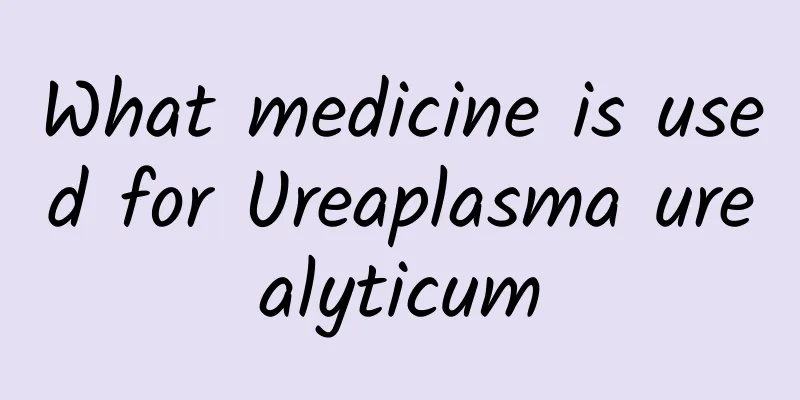What should not be eaten after wound stitches

|
When our bodies are traumatized and left with wounds, using stitches can undoubtedly solve the problem well. Stitches can promote wound healing, but there are many factors that affect wound healing. Some foods can make the wound recover faster, while others will affect the recovery of the wound. These things should not be eaten too much. So, what should not be eaten after stitches on an injury? Let’s take a closer look below. What should not be eaten when wounds are healing? 1. Patients with wounds healing should not eat soy sauce, as it may cause scars on the wounds. 2. Patients with wound healing should not eat spicy and irritating foods, such as chili peppers. These foods can easily cause inflammation of the wound. 3. Patients whose wounds are healing cannot eat edible fungi, such as mushrooms, shiitake mushrooms, etc. These foods are mostly high-protein foods. Eating too much of them can easily cause liver fire. People who usually have symptoms such as headaches and dizziness should try to eat less of them. 4. Patients whose wounds are healing should not eat seafood, such as hairtail, yellow croaker, pomfret, clam meat, shrimp, crab and other aquatic products. Most of them are cold and fishy in nature, which will affect the healing of wounds to a certain extent. 5. Patients whose wounds are healing should not eat fruits such as peaches and apricots. Eating too much of these fruits can cause indigestion, while eating too many apricots can easily damage bones and muscles, both of which will have a certain impact on wound healing. 6. Patients with wound healing should not eat foods such as chicken heads, chicken wings, chicken feet, goose meat, pork heads, etc. These foods can easily cause liver fire, thus affecting wound healing. What to eat for wound healing: 1. You can eat light vegetables such as tofu, cabbage, cauliflower, green beans, peanuts, jelly, green radish, white radish, bean sprouts, cucumber, yam, vermicelli, baotou cabbage, melon, yuba, beans, etc. 2. Pig's trotters: Pig's trotters are rich in zinc and collagen. Zinc deficiency can reduce the function of fibroblasts. Supplementing more collagen can accelerate wound healing. 3. Sea bass: Sea bass is rich in easily digestible protein, fat, vitamin B2, niacin, calcium, phosphorus, potassium, copper, iron, selenium, etc. Traditional Chinese medicine believes that sea bass is warm in nature and sweet in taste, and has the effects of strengthening the spleen and stomach, nourishing the liver and kidneys, and relieving cough and reducing phlegm. 4. Baby pigeon: Pigeon is the only bird without gallbladder. Its liver stores abundant bile, its blood contains abundant hemoglobin, and its bones contain large amounts of chondroitin. These special nutrients have special therapeutic effects on regulating the human brain and nervous system, improving sleep, increasing appetite, helping digestion, activating gonadal and pituitary secretions, and comprehensively balancing human functions, conditioning and strengthening the body. It is beneficial to the storage and utilization of human energy, maintains the normal functions of muscles and nervous systems, and improves myocardial contraction and coagulation functions. 5. Rainbow trout: Originated from mountain streams in California, USA, it likes to live in clear and unpolluted cold water. It mainly feeds on fish and shrimp and can be called a warrior of rapids. The fish has tender meat, delicious taste, no small bones, no fishy smell, high protein and low fat. It is listed as a high-end green food internationally. Rainbow trout can be made into exotic sashimi, and is suitable for steaming or stewing. It can also be made into shredded fish, braised, or smoked fish. It is an excellent food for promoting wound healing. 6. Kelp: The protein and carbohydrates contained in kelp are several to dozens of times that of spinach. It also contains a lot of important vitamins such as carotene, riboflavin, thiamine and niacin. The sodium alginate in kelp also has hemostatic effect on arterial hemorrhage. 7. Black fungus: Black fungus is rich in minerals such as iron. 100 grams of black fungus per day contains up to 185 mg of iron, which is 20 times higher than celery, the green leafy vegetable with the highest iron content. It is also rich in zinc. Therefore, it is a very good natural blood tonic food that can promote the wound healing speed of patients with excessive blood loss after surgery. 8. Bitter melon: Bitter melon juice contains a protein component similar to quinine, which can enhance the phagocytic ability of macrophages. At the same time, the bitter melon and bitter substances in bitter melon can increase appetite, strengthen the spleen and appetite, and are beneficial to wound recovery. 9. Tomatoes: Tomatoes can prevent blood clots. The yellow gelatinous substance around tomato seeds can prevent the coagulation of platelets in the blood. They are also rich in antioxidants such as vitamin C, lycopene, and carotene, which are beneficial to wound healing. 10. Honey: Drinking a little honey will be very beneficial for wound healing. In addition, you can also apply honey directly on the skin or wounds, which has the effects of anti-inflammatory, analgesic, hemostatic, reducing edema, and promoting wound healing. |
<<: What to eat to heal faster after stitches
>>: What to do if the stitch wound itches after childbirth
Recommend
The difference between Perennial Cortex and Acanthopanax Cortex
Both Acanthopanax Cortex and Cyperus rotundus Cor...
What injection should I take for low back pain?
Many people suffer from low back pain, so there s...
What to eat to survive after fat grafting
Some defects of the human body are destined to be...
What is the disease of flocculent shadow in the lungs?
With the improvement of people's living stand...
Can hyperthyroidism be cured?
In recent years, the proportion of hyperthyroidis...
What to eat is good for your eyes
Eyes can be said to be everyone's windows to ...
What does frequent urination mean?
Frequent urination is a relatively common symptom...
Treatment of proctitis
Gastrointestinal discomfort is very distressing. ...
What causes neurasthenia? This is actually an excessive thing!
If we want to effectively treat neurasthenia, we ...
Can white vinegar soaked ginger rub your face to remove spots?
White vinegar is a common condiment in our daily ...
How to massage the neck and cervical spine
Cervical pain is caused by cervical spondylosis. ...
Symptoms of Spleen Meridian Blockage
Spleen meridian obstruction is said from the pers...
What are the requirements for the color of cupping
Cupping, as a term in traditional Chinese medicin...
What causes nipple discharge?
Some people do not take good measures to protect ...
Treatment of neurobehcet's disease
For people, everyone's body is covered with d...









